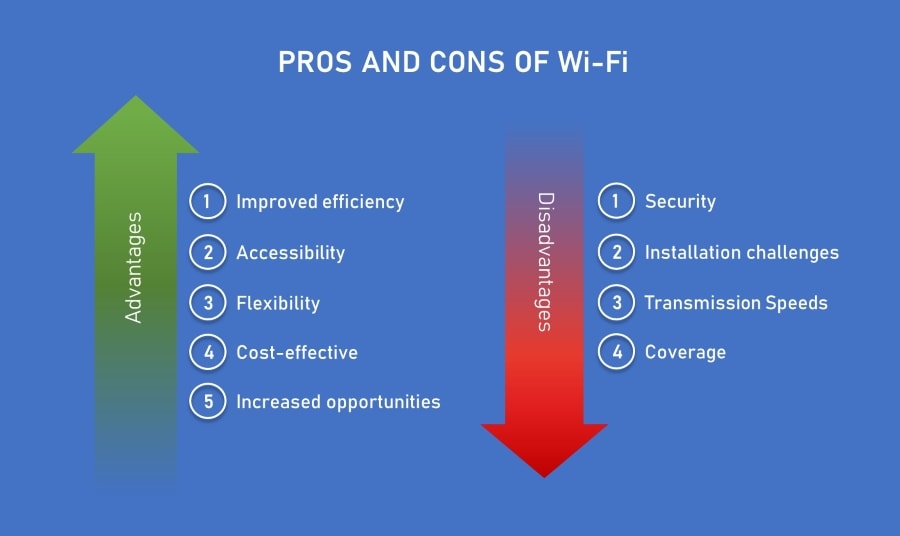What are the different types of Wireless Devices?

Technology has made communication and entertainment faster than ever before. But did you ever notice how that became possible? Wireless communication technology and wireless devices significantly impact our lives, and we can’t live without them. But with so many different types of wireless devices, which ones are beneficial and offer the best advantages?
Nowadays, you’ll see wireless technology in many modern devices. All these devices offer convenience and greater mobility. More importantly, wireless devices play a crucial role in internet and voice communication.
Here, you can learn about the different types of wireless devices and wireless fundamentals to understand what benefits each wireless device offers.
On this page:
Why is Wireless Communication Important?
Many people think that when almost all the tasks can be done by wired communication, they need to move towards wireless communication. The primary benefit of wireless devices is mobility. Moreover, they are easy to use, flexible, and popular.
You can communicate anywhere around the world by using wireless technology. Another reason for using wireless communication is the setup and installation cost. Wired connections are expensive and time-consuming to set up. On the other hand, wireless communication infrastructure is easy and cheap to install.
More importantly, in remote locations and emergencies, the setup of wired communication can be complicated. Therefore, wireless communication seems a viable option.
Related: Understanding Wireless Networks: A simple guide for business
Different types of Wireless Devices
Let’s discuss the various wireless devices and see how they impact our lives without wasting any time.
Wireless Router
This device acts as a medium between the internet connection and other wireless devices. It accepts incoming internet connections and then sends the data in radio frequency signals to nearby wireless devices. The role of a wireless router is to connect devices like computers and mobiles to the internet.
When the connection is established, it’s often known as WLAN. Nowadays, wireless routers come with advanced and built-in security features like firewalls. This built-in security feature protects the connected devices from malicious attacks and viruses.
Wireless Adapters
As the name indicates, you can install these hardware devices inside the computer to make wireless connectivity possible. Without these wireless adapters, a computer can’t be connected to the router to gain internet access.
Nowadays, most computers have wireless adapters in their motherboard. Still, if it’s not available on your computer, then you can install stand-alone wireless adapters. It will ensure that you can connect your computers to the internet.
Wireless Phones
Both cordless and cellular phones use wireless signals for communication. Cell phones have a more extensive range than local area networks. On the other hand, cordless phones have a limited capacity. In the case of cell phones, telecommunication towers provide coverage. Satellite phones are similar to Global Positioning System devices, and they use satellite signals for communication.
Wireless Repeater
This networking device can help extend the range of a router. When you place it between the computer connected to the internet and a wireless router, it boosts the signal strength. The role of a repeater is to get the wireless signals and then re-emit them after increasing their power. As a result, you get faster connection speeds.
Other Devices
All devices that use RF signals for communication are known as wireless devices. Some examples of these devices are walkie-talkies, baby monitors, and garage door openers.

Types of Wireless Communication Systems
Wireless communication systems come in several forms. Below, we have summarized the more common wireless communication systems:
Satellite Communication
This wireless network provides worldwide coverage irrespective of the population density. This type of communication system offers positioning and navigation, internet, broadcasting, and cell phones telecommunication.
Bluetooth
It’s another type of wireless communication system, but it’s for only short range. You can use this system for audio, video, and data transmission. But it works only within 10 meters. All mobile phones, laptops, and tablets contain the Bluetooth option for connectivity. Moreover, you can connect speakers, cameras, and receivers without wires.
Infrared Communication
We use this communication system in our daily lives. This technology is used in remote controls of cars, TV, and audio equipment.
Wi-Fi
When multiple devices are connected with the internet, without wires, it’s called Wireless Local Area Network (WLAN). In this network model, Wi-Fi is used for internet access. In this modern world, we can’t survive without the internet.
Also read: Cellular networks: A quick guide for Business users
Advantages of Wireless Devices
Wires devices offer many benefits over wired devices. Let’s discuss some most important benefits of wireless communication technology.
1. Cost – In wired connections, you need to pay for cables and other infrastructure. You don’t need them in wireless communication. In the case of wired connections, you need to dig earth to lay cables, and also spreading wires across the streets is a time-consuming and complex process. Therefore, it lowers the overall cost of the system.
When you drill holes in a building, it affects the integrity of the building. Moreover, you can’t connect with other facilities even if they’re located locally. So, wireless communication and LAN seems to be the best option.
2. Mobility – It’s perhaps the best and most important benefit of wireless networks. With wireless technology, you can move around, but your internet connection won’t be lost.
3. Easy Installation – Wireless networks are straightforward to install, and there will be no hassle in managing cables. As such, setting up a wireless network is less time-consuming than a cabled network.
4. Reliability – Wireless technology doesn’t involve cables for communication, so there is no risk of communication failure if the wires are damaged.
In the case of wired networks, environmental conditions can also result in communication failure.
5. Disaster Recovery – Accidents like fire and flood can cause significant communication loss in a wired network. But in the case of wireless communication, the loss will be minimal.

Final Words
With the evolution of technology, many wireless communication networks have made the lives of people easier. We have discussed some types of wireless devices and wireless communication networks.
You can identify which one you’re using and which technology you want to use in the future. If you feel we have missed something, you can let us know.

